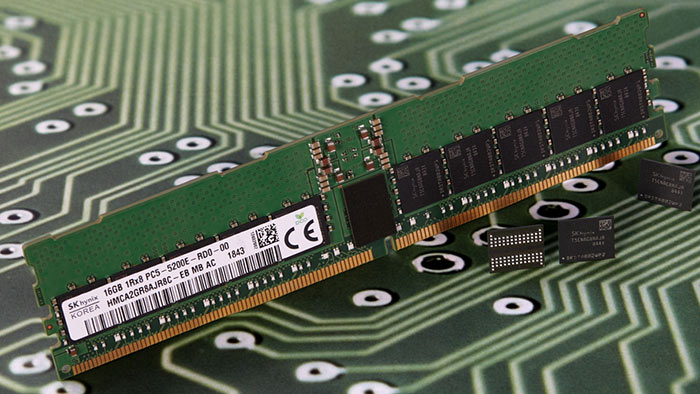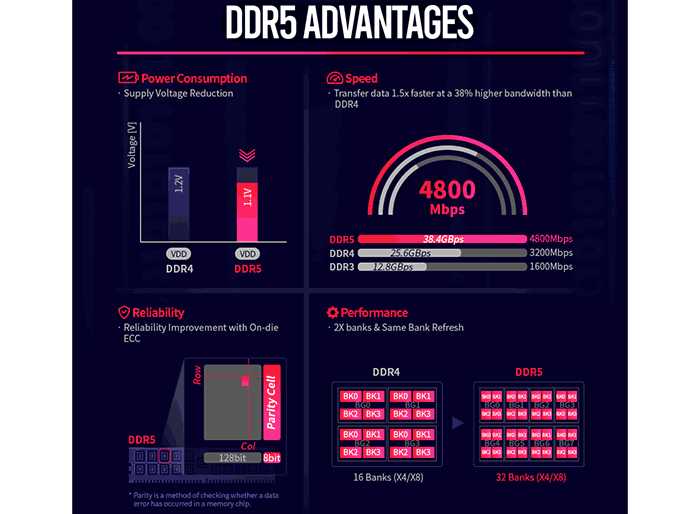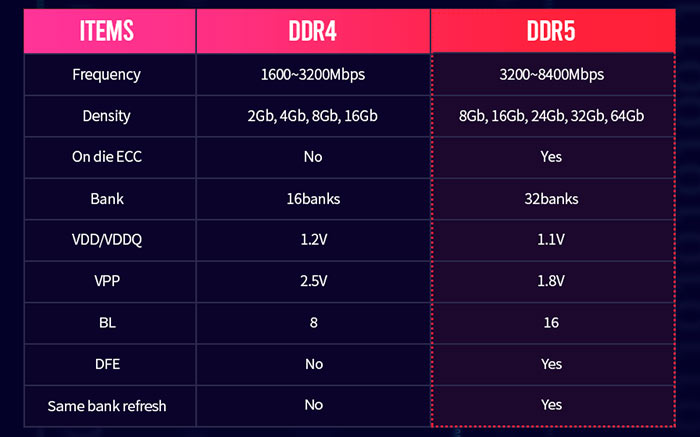SK hynix has updated its newsroom content with a technical blog about the attractions of DDR5. The blog contains a number of interesting points and illustrations making the advances of DDR5 and its appeal very clear. Moreover, SK hynix says that DDR5 will be available "in the near future," and backs that up by announcing mass-production of its DDR5 memory chips "this year". HEXUS has reported previously on the road to DDR5, as the next DRAM standard, including a piece on SK hynix's first DDR5 chips published in Feb 2019.

A well established trend in recent years is of computers typically packing in more CPU cores. That pace of the change has been rather dramatic and so too has the demand on memory bandwidth to make an efficient system. In 2013 we witnessed a big transition from DDR3 to DDR4 which delivered a DIMM bandwidth increase of approx a third. In developing DDR5 SK hynix has aimed for a more than doubling of bandwidth per DIMM, aiming for over 4,800Mbps.

In addition to extra bandwidth, SK hynix says it has endeavoured to increase performance, capacity, and power and cost efficiency beyond the capabilities of DDR4 - plus offer greater reliability with on-die ECC. It has adopted the following features to realise this goal:
- Firstly, DDR5 adopted 32banks structure based on 8 bank groups, which is twice as many as DDR4's 16banks structure using 4 bank groups. This helped double DDR5's memory access availability compared to DDR4.
- Secondly, DDR5's burst length (BL) is increased to 16 compared to 8 of DDR4, which is another key feature to double memory access availability.
- Thirdly, DDR4 cannot perform other operations while refreshing, so it cannot be accessed from the system during refresh timing. However, DDR5 adopted Same Bank Refresh function, allowing the system to access other banks when certain banks are operating, thus improving memory access availability.

As you can see from the DDR5 specs highlighted and compared above, SK hynix indicates that JEDEC speeds for modules will reach DDR5-8400.
According to market researchers quoted by SK hynix, DDR5's adoption starting from 2020 will rise to account for 22 per cent of the total DRAM market as soon as 2021. SK hynix intends to deliver ultra-high-speed, high-capacity memory from the outset, starting with its 10nm-class 16Gb DDR5 chips.






